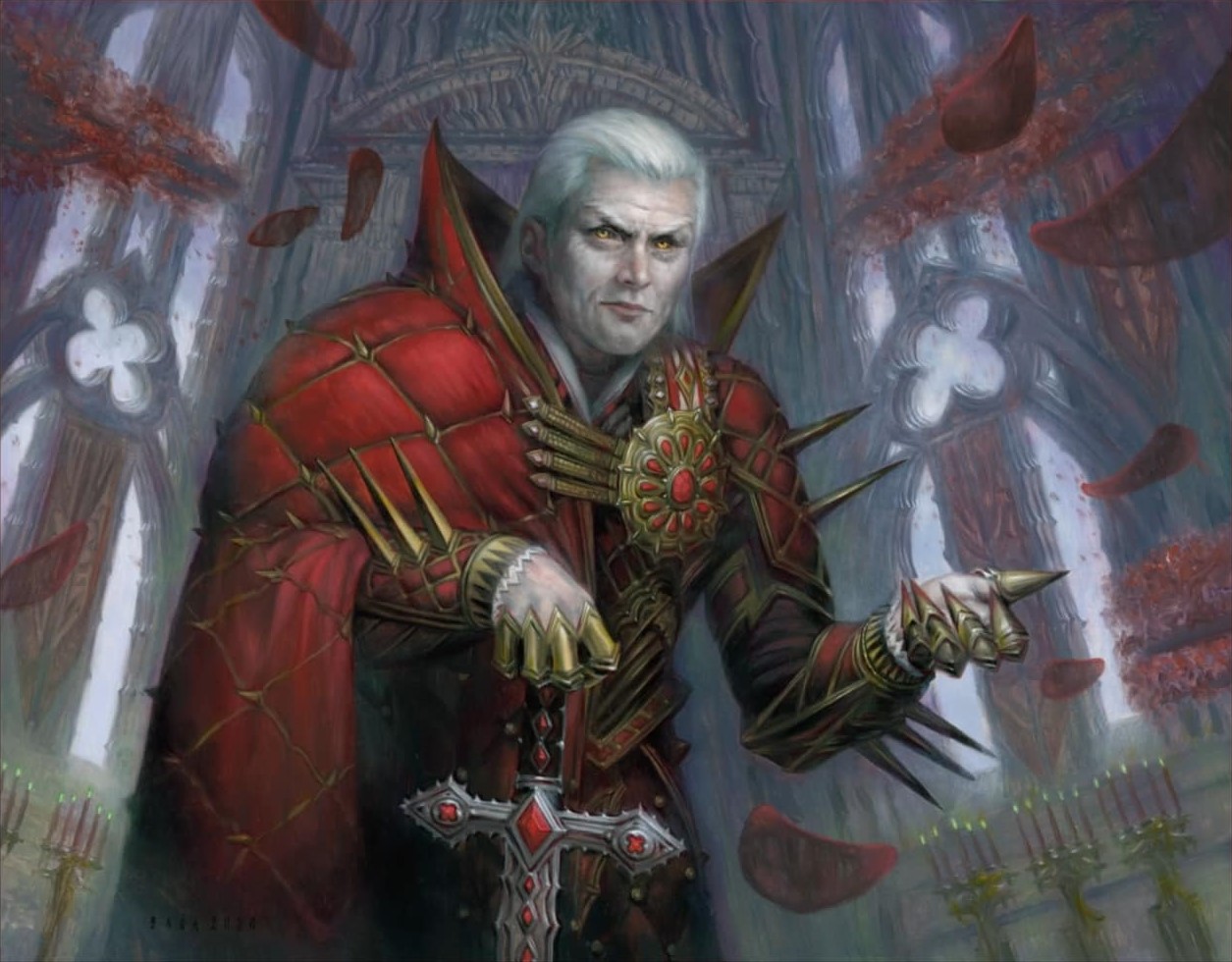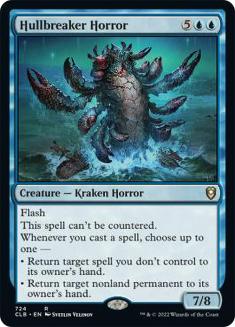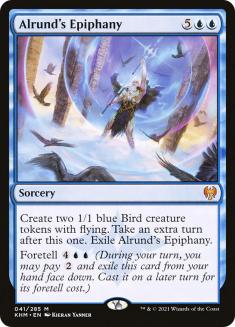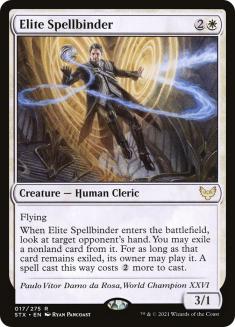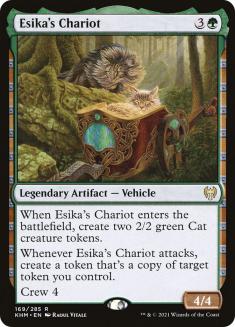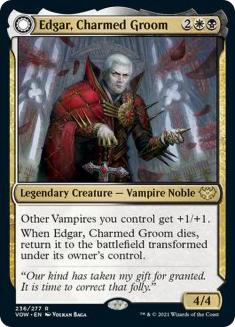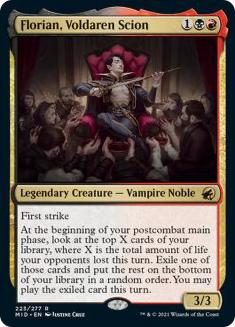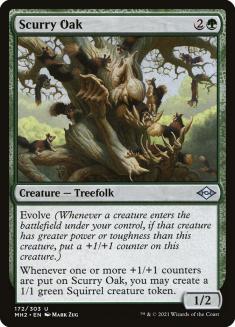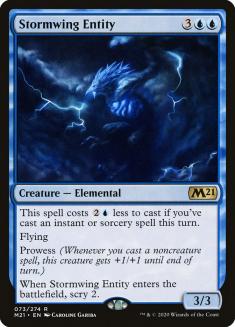The Innistrad Championship is in a weird spot as far as dissemination of information is concerned. On one side, we live in the most connected period of our history. It’s easy to talk to people from anywhere in the globe at any time, it’s easy to find opponents, and it’s easy to look at the results from previous tournaments, which means that metagames are often established early on and everyone knows everything.
On the other hand, there have been few big tournaments of this format, which means everyone has a ton of opinions but there’s simply not a lot of data to corroborate them. As such, narratives get created and spread around, but we don’t actually know what is going to happen, and the Championship will probably set the tone for Innistrad: Crimson Vow Standard moving forward.
In today’s article, I’ll share eight predictions about the Innistrad Championship – some things that I believe will underperform or overperform compared to what seems to be the public expectation. This should also give you an overview of where I believe the Innistrad: Crimson Vow Standard and Historic formats are going into the event.
Prediction #1: Hullbreaker Horror will underperform.
When Hullbreaker Horror came out, it was immediately elevated to superstar status, and for good reason. The card is highly appealing (so much so that the majority of writers put them in their Top 5 lists for Innistrad: Crimson Vow). Standard had lacked a flash finisher for ages, but with Hullbreaker Horror it was suddenly possible to play a draw-go style of deck that would, at the end of the turn, deploy a threat that was also a good blocker and that disrupted spells to boot. As a 7/8 flash creature, Hullbreaker Horror is also the ideal size to ambush any and all creature-lands, which are traditionally the bane of this kind of deck.
Right after it was released, we saw a major shift in the composition of Izzet decks. They went from being combo-centric, with Galvanic Iteration trying to copy Alrund’s Epiphany, to being control-centric, with Hullbreaker Horror as a finisher. After that, there was some pushback in the other direction, to a point where there are now several different versions of the deck: some that play just Alrund’s Epiphany, some that play a mix of Epiphanies and Horrors, and some that eschew Epiphany for Horror completely.
My prediction is that the versions that focus more on Hullbreaker Horror will not perform well. As powerful as the card is, it’s uniquely badly positioned in this format. It’s uncounterable, but the most-played counterspell is Divide by Zero, which can deal with it regardless, and it’s weak to Mono-White Aggro❄, especially now that they have Valorous Stance. Orzhov-based decks have also taken to adopting Vanishing Verse, which can really punish you for playing a seven-drop that they can kill.
This isn’t to say that I don’t think Hullbreaker Horror is playable, but I think it’s a niche card that gives you a different angle in mirrors, and not a plan unto itself. I would never play more than one in the maindeck of an Izzet Epiphany deck, and even in the sideboard I would probably play a max of two. I think the versions that rely too much on Hullbreaker Horror will find themselves disappointed.
Prediction #2: Alrund’s Epiphany will overperform.
This is a direct consequence of the above prediction: Hullbreaker Horror-focused decks will not do as well as Alrund’s Epiphany-focused decks. What’s more, I believe that there will be a direct correlation between the number of Alrund’s Epiphanies in an Izzet deck and the number of wins. Right now, some decks that focus on Epiphany tend to play three copies, and some people even play two, and I think the correct number is clearly four (alongside four Galvanic Iterations).
There’s a lot of talk that “Alrund’s Epiphany and Galvanic Iteration are the win conditions.” Traditionally, you don’t care that much about the win condition in your control decks; you just want something that is not very disruptive and that can stand on its own. By that logic, playing Hullbreaker Horror makes sense. However, I believe the correct approach to the deck is to treat it as a combo deck. You’re not trying to control the game and eventually win with Epiphany + Iteration en passant; you’re literally trying to assemble this combination to win the game.
Having this win condition that goes over the top of literally anything is the main reason this deck is actually good. It’s what leads to beating the Orzhov-based control decks, for example. If you have Epiphany and Iteration, unless they are interacting with spells on the stack, you don’t care about what they are doing. Given enough time, you will win the game. With Hullbreaker Horror, this is not necessarily true, or, if it is true, it takes a whole lot longer. The ability is powerful, but it can still be killed, blocked or raced.
So, in sum, this is a spot in which the win condition from the control deck actually matters, and I think Alrund’s Epiphany + Galvanic Iteration is a better win condition than Hullbreaker Horror.
Prediction #3: Mono-White Aggro❄ will underperform.
Mono-White Aggro❄ was already a powerful deck before Innistrad: Crimson Vow, and it got several new tools with the new set, with Thalia, Guardian of Thraben; Hopeful Initiate; and Valorous Stance being the key ones. It stands to reason that it would be one of the best-performing decks at the Championship. In fact, it has been posting up good numbers in the few online tournaments we’ve had.
However, I don’t think it will do very well at the tournament, because I believe most people have adapted to it. There are now four Spikefield Hazards in every Izzet deck, and most people maindeck Cinderclasm, which is the absolute best card against you. Mono-Green Aggro❄ improved against you with the addition of a one-drop, and some of the cards you got (Thalia and Valorous Stance) aren’t that good versus them. Orzhov Control has gained in popularity and that’s a bad matchup.
Most importantly, Mono-White Aggro❄ suffers from being unable to beat the other top decks at the same time. You can tune your deck to be better versus Izzet and you can tune your deck to be better versus Mono-Green Aggro❄, but you can’t do both. In the end, you must choose if you want to play cards like Valorous Stance, Paladin Class, Elite Spellbinder, and Reidane, God of the Worthy or cards like Portable Hole, Brutal Cathar, and Skyclave Apparition. Choosing wrong can be devastating, and I’d argue that, versus this field, it’s almost impossible to choose right.
This doesn’t mean Mono-White is a bad deck – it’s still a good deck – but I do not expect it to do super-well in this tournament specifically, in part because I think it will be beaten by the next deck on our list.
Prediction #4: Mono-Green Aggro❄ will overperform.
After Worlds, it seemed like the hive mind was a little off Mono-Green Aggro❄. I kept trying to tell people that it was much better than its results in that one tournament indicated and that it had even improved after the new set, but the consensus seemed to be that Mono-White Aggro❄ was a simply a better version of it – that it had gained too much and there was now no reason to play Mono-Green over it.
At the Championship, I believe Mono-Green Aggro❄ will be a good deck and it will outperform Mono-White Aggro❄. This is for two reasons. First, it’s easier to adapt to Mono-White than it is to adapt to Mono-Green. Mono-Green is a much more resilient deck (if less explosive), and it’s not as vulnerable to effects like Cinderclasm. Even the “Mono-Green hate cards,” such as Burning Hands, are just one-for-one removal spells.
Second, Mono-White decks have to choose one deck to beat, and they might have to choose beating Epiphany. Can you really afford to play a bunch of Maul of the Skyclaves in the Mono-White deck? Some people will, but some people will not, and the same is true for the other anti-aggro cards. I believe White decks are slightly favored versus Green decks, but not if they don’t have the matchup in mind when choosing their list, and I suspect most people will not have this matchup in mind when they do.
Prediction #5: Edgar, Charmed Groom will be one of the strongest additions from Innistrad: Crimson Vow.
When I did my Top 5 for Innistrad, Crimson Vow, I did not even consider including Edgar, Charmed Groom in it. Part of that was because there were simply no Orzhov decks that could play it; part was because there seemed to be enough ways of dealing with it without actually killing it in the format (bounce, Skyclave Apparition); and part of that was because the transform cards just have too many words and it’s hard to even parse what they do when you’re looking at a preview. For example, when I originally read it, it was lost on me that you could actually have two of them working simultaneously (since one will always be flipped).
I believe I was wrong. If Edgar, Charmed Groom is not one of the Top 5 cards in the set, it’s definitely in consideration, and I think it will make a big splash this weekend. The card is just too versatile; it’s powerful against anyone trying to control the game, as it’s virtually unkillable, and it’s just an impenetrable brick wall against Mono-Green Aggro❄. Mono-White Aggro❄ has ways of dealing with it (Brutal Cathar, Skyclave Apparition, and going over it with fliers), but Mono-Green is truly helpless against the card.
As for where to play it, well, life always finds a way. It seems to me that the default Blood on the Snow deck is now Orzhov, and that deck makes very good use of Edgar, Charmed Groom, as will any other deck with sweepers. When I started playing Magic, we had the classic “Icy Manipulator + Wrath of God” combination, which meant that the opponent had to overextend into your sweeper because Icy Manipulator was slowing them down, and Edgar plays a similar role. If you have Edgar out, they have to commit everything to the battlefield, since otherwise they can’t get through it, at which point the Blood on the Snow ends the game.
I think Edgar is clearly good in these Orzhov decks, but the deck it might improve the most is Esper. These decks traditionally struggle with Mono-Green Aggro (and other aggro decks in general), but Edgar goes a long way towards shoring up those weaknesses and also closing out the game, to a point where I think it can singlehandedly swing the matchup. Basically, I don’t think we’ve seen the end of the possibilities where Edgar, Charmed Groom is concerned.
Prediction #6: Rakdos Vampires will underperform.
Rakdos Vampires is a really cool deck, and I tried to make it work (I’ve been trying to make it work since last set, to be honest), but ultimately I don’t think it can compete with the other aggro decks in the format. There’s just not that much incentive to be Vampires as a tribe, a lot of cards compete for the same spots in the curve, and the monocolored cards are so strong. Cards like Luminarch Aspirant, Esika’s Chariot, and Werewolf Pack Leader are just better threats than the ones in the Rakdos colors, and Blizzard Brawl, Valorous Stance, Skyclave Apparition, and Brutal Cathar are arguably better removal, which is crazy because black and red used to be the kings of removing creatures. On top of that, you don’t get to play the best creature-land, Faceless Haven.
This is the prediction I will be most happy to get wrong. I really hope there is a good Vampires deck, but I honestly don’t expect there to be.
Prediction #7: Lifegain-based Selesnya Company will be the breakout deck in Historic.
If Innistrad: Crimson Vow Standard has little data for us to go on, Historic is completely devoid of it. There are no big tournaments to look at and even ladder is traditionally unreliable for the format (you could play twenty matches at high ranks and not play versus a single deck that you’ll play against in the tournament). In some ways, it makes things exciting; for the first time in years it’s not only possible but even likely that you will play against a deck you’ve never seen before.
Still, the Tier 1 should remain relatively constant: Food decks, Izzet Phoenix, Jeskai Control, and Selesnya Humans. The prediction here is that I believe the Selesnya Company deck with the focus on lifegain will not only become a part of Tier 1 but also supplant Selesnya Humans (not in terms of popularity, but in terms of results).
It might seem a bit silly to compare the two decks (after all, they play out differently and have different matchup spreads), but they are two Selesnya-based decks with Collected Company and some overlap in them, so I think the comparison is valid. The key here is that Selesnya Humans looks like a real deck, and Selesnya Company sort of doesn’t – it looks like a meme, because it’s based in lifegain, and, as I wrote in my preview article for Voice of the Blessed, professional players are not too keen on lifegain cards. This leads to a scenario where a lot of people will not give this deck the attention it deserves, and I believe it deserves a lot of attention.
I suspect that, after the Championship, this deck will solidify itself as part of the Tier 1 and will be the default Selesnya Company deck of the format. Selesnya Humans will still exist, but will take a step back, in large part because of its horrendous matchup against the lifegain version.
Prediction #8: Stormwing Entity will overperform in Izzet Phoenix decks.
There are many possible threats you can play in an Izzet Phoenix deck. Arclight Phoenix (obviously), Dragon’s Rage Channeler, Sprite Dragon, Crackling Drake, Demilich, Stormwing Entity, and Smoldering Egg are some of the available options. Of those, I feel like Stormwing Entity is flying a bit under the radar at the moment.
You can’t play too many Stormwing Entities – it’s somewhat of a clunky card – but it has two critical characteristics that make me think it belongs in the deck. First, it has three toughness, with “easy access” to a fourth point. Three is sort of the magical number in the format because so many decks run variations of Shock, and four dodges Lightning Helix and Anger of the Gods. That said, other cards on this list have three or four toughness, so this is not the biggest selling point for Stormwing Entity.
The biggest strength of the card is its mana value. Even though in practice Stormwing Entity costs two (or three, depending on how you look at it), its actual cost is five. That’s crucial in this format because it dodges, for example, both Portable Hole and Skyclave Apparition. It’s the only threat that you can reasonably play that is immune to both these cards, which can end up making a difference in a ton of games, and I predict it will outperform the alternatives that are available.
Of course, these are just predictions – I could end up being wrong in everything – but I strongly believe these things to be true, so much so that my own deck choices are predicated on all these things being correct. If they are not, then I might end up looking very silly at the Championship, but let’s hope this doesn’t end up being the case!

